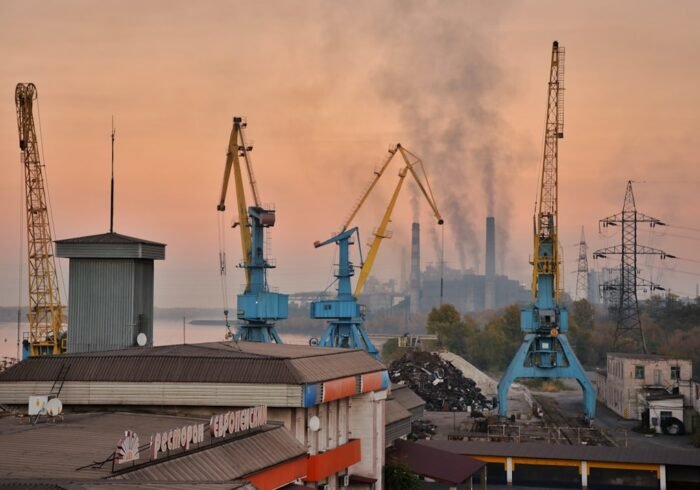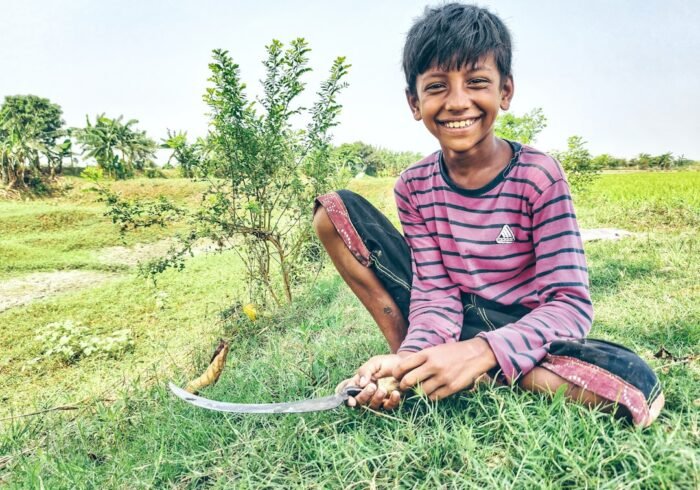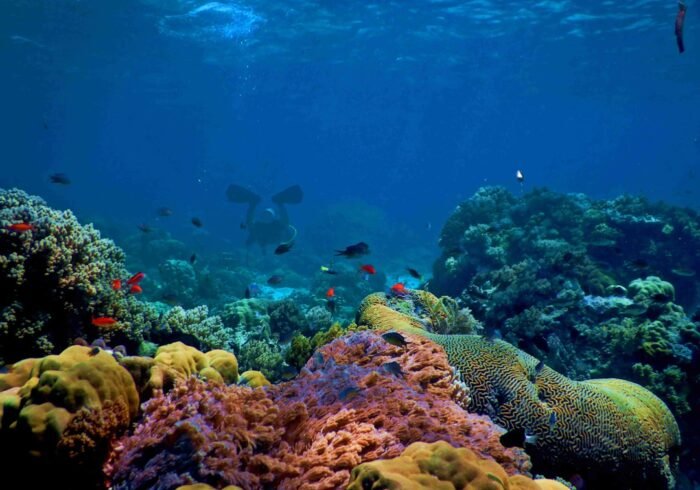Climate Change Adaptation: A Holistic Approach One of the biggest issues confronting humanity today is climate change, which has profound effects on human health, natural ecosystems, and economic stability. Rising global temperatures, an increase in the frequency and severity of extreme weather events, and altered precipitation patterns are just a few of the effects identified by the Intergovernmental Panel on Climate Change (IPCC). Hurricanes and typhoons, for example, have become more frequent over the past few decades, wreaking havoc on coastal communities. This pattern was demonstrated during the 2017 hurricane season in the Caribbean, which included hurricanes Irma and Maria. These storms caused billions of dollars in damages and forced thousands of people to relocate.
Key Takeaways
- Climate change is impacting communities and ecosystems, leading to increased vulnerability and risk.
- Challenges of climate change adaptation include resource constraints, lack of infrastructure, and limited access to information and technology.
- Sustainable solutions for climate change adaptation involve integrating nature-based approaches, promoting renewable energy, and enhancing water and food security.
- Building resilience in communities and ecosystems requires strengthening social networks, improving disaster preparedness, and conserving natural resources.
- Incorporating climate change adaptation into policy and planning involves developing and implementing climate-resilient strategies, enhancing governance, and mainstreaming adaptation into development plans.
Also, the effects of climate change differ greatly between communities and geographical areas, making it a non-uniform phenomenon. Prolonged droughts have caused acute water shortages in some places, which has an impact on food security and agriculture. On the other hand, flooding occurs in other areas as a result of climate change-exacerbated heavy rainfall events. The 2020 South Asian monsoon season, for instance, caused devastating flooding in Bangladesh and India, forcing millions of people to flee their homes & causing large-scale agricultural losses. Creating successful adaptation plans that take into account the unique vulnerabilities of various communities requires an understanding of these localized effects.
A complex web of obstacles must be overcome in order to adapt to climate change, which may make effective responses more difficult. The unpredictability of future climate scenarios is one of the main challenges. Although climate models offer insightful forecasts, they frequently contain some degree of uncertainty that can make planning more difficult.
For example, local governments might find it difficult to decide what to do if there are conflicting forecasts regarding future temperature increases or rainfall patterns. This ambiguity can result in poor decision-making or indecision, which increases vulnerabilities rather than lessens them. Disparities in socioeconomic status within and between communities present another major obstacle.
| Challenges | Solutions |
|---|---|
| Rising sea levels | Building sea walls, restoring coastal wetlands |
| Extreme weather events | Improving infrastructure, early warning systems |
| Changing precipitation patterns | Implementing water conservation measures, improving irrigation techniques |
| Loss of biodiversity | Protecting and restoring natural habitats, implementing conservation programs |
Low-income households and marginalized groups are examples of vulnerable populations that frequently lack the resources needed to successfully adapt to climate change. In urban areas, for instance, people living in informal settlements may be especially vulnerable to flooding because of poor infrastructure & restricted access to emergency services. Targeted interventions that put equity and inclusivity at the forefront of adaptation initiatives are necessary to address these disparities.
Also, since adaptation projects frequently call for significant funding and long-term planning, a lack of political will and commitment at different governmental levels can obstruct progress. Multifaceted approaches that incorporate social, economic, and environmental factors are necessary for sustainable climate change adaptation. Promoting nature-based solutions (NbS), which use natural processes to increase resilience, is one successful strategy. For example, reforesting mangrove forests along coastlines can support biodiversity and sequester carbon while acting as natural barriers against storm surges.
It has also been demonstrated that restoring wetlands reduces the likelihood of flooding while enhancing water quality and offering wildlife habitat. Along with solutions found in nature, technological advancements are essential to adaptation initiatives. Precision irrigation systems & crop varieties resistant to drought are examples of agricultural technology advancements that can assist farmers in adapting to shifting weather patterns. For instance, despite irregular rainfall patterns, farmers in sub-Saharan Africa have been able to boost yields through the adoption of climate-smart agricultural practices.
Also, smart infrastructure solutions that increase resilience to extreme weather events can benefit urban areas. Cities can adapt to rising temperatures and more rainfall while simultaneously enhancing air quality and urban aesthetics by implementing green roofs, permeable pavements, and urban tree canopies. It takes a comprehensive strategy that takes into account both natural ecosystems and human communities to build resilience. Participatory planning procedures that involve locals in decision-making can promote community resilience. Adaptation plans can be customized to fit the unique requirements of individuals most impacted by climate change by incorporating community members in the identification of vulnerabilities and viable remedies.
For example, in the Philippines, community-led projects have effectively put disaster risk reduction strategies into place, enabling local people to get ready for floods and typhoons. Because healthy ecosystems support human well-being by providing necessary services, ecosystem resilience is equally important. Conservation initiatives that preserve biodiversity can increase ecosystems’ resistance to the effects of climate change. For instance, keeping a variety of plant species in agricultural systems can enhance soil health and lessen susceptibility to illnesses and pests. Also, maintaining natural habitats like wetlands and forests can support wildlife populations & act as a buffer against climate-related hazards for communities.
Conservation groups and local communities working together can produce synergies that are advantageous to both people and the environment. The incorporation of adaptation strategies into current planning procedures & policy frameworks is necessary for effective climate change adaptation. For adaptation to be coordinated, local, regional, and national policies must be in line with climate goals. Climate risk assessments, for example, can be incorporated into urban planning projects to prioritize infrastructure improvements and identify areas that are at risk.
Buildings in flood-prone areas have been raised, and green spaces have been improved to control stormwater as part of the city of Rotterdam’s comprehensive climate adaptation plan. Also, sectoral policies in areas like public health, water management, & agriculture that incorporate climate adaptation can improve overall resilience. In addition to assisting farmers in adapting to shifting climatic conditions, agricultural policies that support sustainable land management techniques can also increase food security. Similar to this, water management strategies that emphasize efficiency and conservation can lessen the effects of droughts and guarantee that all communities have access to clean water. Governments can build a more resilient society that can effectively respond to climate change by integrating adaptation into policy frameworks at all levels. Innovative Solutions via Collaborative Methods.
More creative solutions that take into account the particular difficulties that each group faces can result from collaborative methods. For example, community-based adaptation projects that enable citizens to take action have been implemented thanks in large part to collaborations between local governments and non-governmental organizations. increasing public knowledge of climate action. Increasing public knowledge of the effects of climate change and adaptation techniques is crucial to gaining support for programs at all levels. Campaigns for education that emphasize the value of adaptation can inspire local residents to take an active role in initiatives.
Movements for Collective Action at the grassroots level. The ability of group action to bring about change is exemplified by the emergence of grassroots movements to support climate action in numerous regions. Communities can create shared resilience visions that align with their priorities and values by providing forums for discussion among stakeholders. Our understanding of the effects of climate change and the creation of practical adaptation plans depend heavily on research and innovation.
Funding scientific research can yield important information about regional climate trends and vulnerabilities, empowering decision-makers. Universities & other research institutions, for instance, have developed predictive models that assist communities in anticipating extreme weather events and making appropriate plans. Fostering technological innovation can also result in new instruments and methods that improve adaptability. By combining resources from both industries, public-private partnerships can significantly contribute to innovation.
In order to create sustainable energy solutions that lower greenhouse gas emissions & increase resilience to the effects of climate change, for example, governments are increasingly working with companies that specialize in renewable energy technologies. Prioritizing research funding and encouraging creative projects will help societies better prepare for the difficulties that climate change will present. Education is essential for giving people and communities the knowledge they need to successfully adapt to climate change. Young people can be prepared for future challenges and develop a sense of environmental stewardship by incorporating climate change education into school curricula. Community gardening and local conservation initiatives are two examples of programs that prioritize experiential learning and can foster a deeper comprehension of ecological systems and their significance for resilience. Campaigns for public awareness are just as crucial for educating larger audiences about the necessity of adaptation measures.
Spreading knowledge about climate risks and available adaptation resources can be facilitated by utilizing a variety of media platforms, including social media, community workshops, and public forums. Captivating storytelling techniques can motivate community action while simplifying difficult scientific ideas. We may foster a resilient culture that enables people to proactively prepare for an uncertain future by encouraging education and awareness at all societal levels.
In conclusion, dealing with the complex issues raised by climate change necessitates an all-encompassing strategy that includes comprehending its effects, recognizing adaptation barriers, putting sustainable solutions into practice, enhancing community & ecosystem resilience, integrating adaptation into policy frameworks, successfully involving stakeholders, allocating resources for research and innovation, and raising awareness & education. To build a resilient society that can handle the challenges of a changing climate, each of these components is essential.




[…] One related article to anti-greenhouse gas efforts is “Adapting to Climate Change: Challenges and Solutions” which discusses the various ways individuals and communities can mitigate the effects of climate change. This article provides valuable insights into the importance of taking action to combat global warming and offers practical solutions for reducing carbon emissions. To learn more about this topic, you can visit the article here. […]